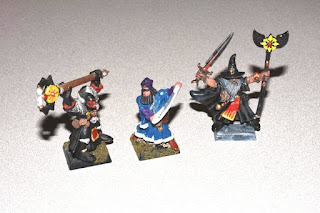Review by Pablo Bauleo
The
Eduard Mirage IIIC is a well-known kit and it is nice to see it re-released.
Despite some known issues, still builds into a nice replica of the French
interceptor.
The
kit comes molded in light grey plastic, with a total of 167 parts in 8 sprues,
plus a small sprue of clear parts. The decals are printed by Eduard, they are
opaque and in register. There is neither PE nor masks in this boxing. This
particular review model was used in conjunction of another review item (Eduard
49659), so it has photo-etch on the cockpit, but that is not part of the
original boxing.
Construction,
as usual begins with the cockpit. The side consoles and instrument panel have raised
detail and bode well for drybrushing. There is also the option of a decal for
the instrument panel if you like. At the same time you assemble the cockpit you
need to assemble the nose wheel well. Ensure good alignment of those parts or
they could throw off the alignment of the fuselage halves and lower wings.
There
are two other subassemblies needed before closing the fuselage: a “backing” to
the air intakes to prevent see-through into the fuselage and the tail pipe
assembly. The engine and tail pipe assembly looks nice when assembled but there
are two prominent seams that need to be filled down the tail pipe.
With
those 3 sub-assemblies (Cockpit and nose well wheel, tail pipe and air intake
backing) you have a small jigsaw puzzle for alignment while closing the
fuselage. I might have done something wrong –or maybe it is the molds fault-,
as when I was adding the air intakes I ended up with a step on both of them. I
had to sand them down and re-scribe that area.
Something
that it was not my fault is a small ridge along the rudder. It actually seems
like the mold was slightly misaligned when the part was injected. I was able to
remove the ridge, but still the panel lines did not match on the left and right
parts of the rudder. It is very hard to notice, unless you know where to look
and what to look for.
The
wings are a simple affair, with a single bottom piece to ensure the anhedral of
the Mirage wing. Make sure you sandwich the landing gear bays before you glue
the wings together. If you are going to add any weapons or drop tanks make sure
to open the holes at this point. The wing to fuselage joint was a less than
average fit. I had to add a piece of sprue inside the fuselage to spread it
enough as to only need a minor spot for putty. The other area where I had a few
gaps was in the lower wing to tail area. Again, just a minimal amount of putty
took care of it.
I
wanted to do something a bit different with my model and I’ve modified the wing
to have the flaps dropped. I do not know if the real airplane would drop them
when on the ground, but I do like the way it looks.
The
model was moving real quick towards painting stage, which was accomplished
using enamels and careful masking After a coat of Future, I’ve applied the
decals, which were really good quality. Thin, yet strong, with good color
density and in register. This was my first experience with Eduard-printed
decals and I was happily impressed.
The
only thing to consider when decaling is that the printed copy of the
instructions is black and white and printed in a small page (actually 2 pages
per Letter size page) and it is hard to tell where each stencil is supposed to
go. Do yourself a favor and download and print the color instruction sheet from
Eduard’s website.
The
landing gear was assembled without any issues and painted. When it was time to
join the struts to the wheel wells I was surprised by how flimsy the overall
assembly is. You want to be very careful when handling your model.
In summary:
This kit requires some modelling skills to fix some of the fit issues around
the air intakes and the wing to fuselage join. However it is not above the
skills of the average modeler to fix (or prevent) those issues. My sample seemed to have some misaligned mold
issue in the rudder area. Some sanding partially corrected the issue, but still
there is some mismatch on the panel lines between the left and right side of
the rudder.
Despite
those issues, this kit is really nice, goes together with minimal fuss and it
looks great when finished. I have to say I am very happy to have added it to my
model collection.
Recommended
to modelers that have a few kits under their belts. The average modeler should
have no problem assembling this kit.
I
would like to thank Eduard and IPMS/USA for the review sample























